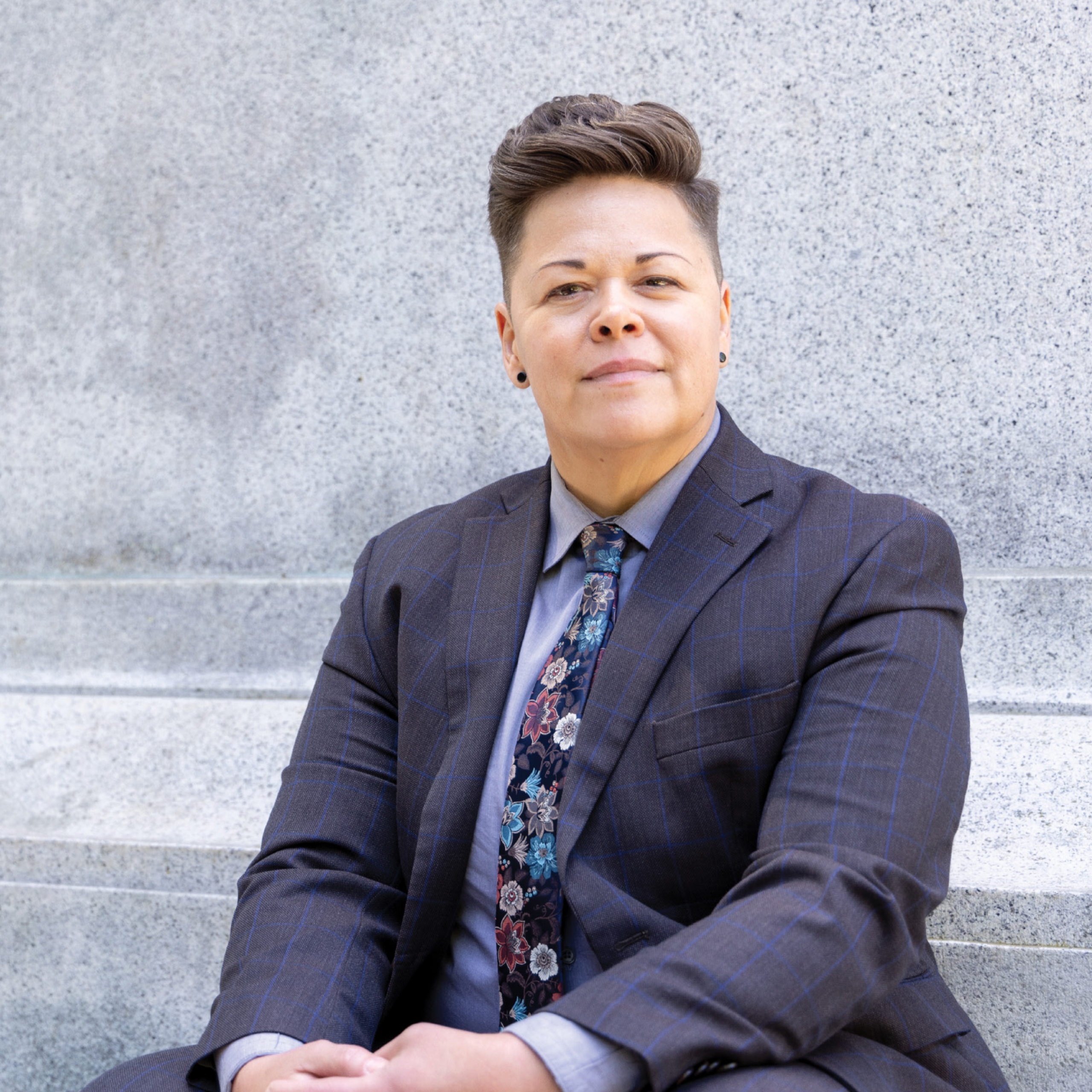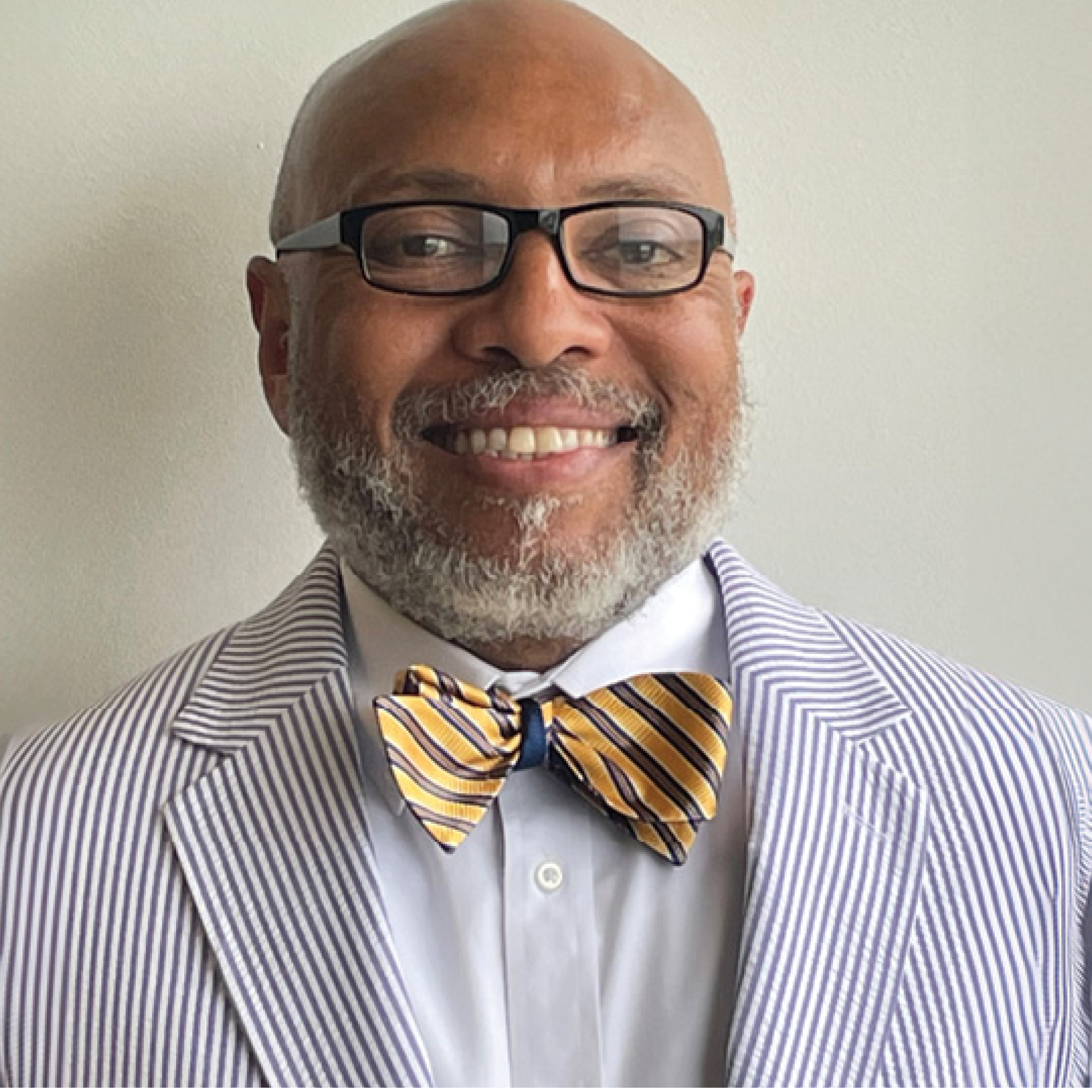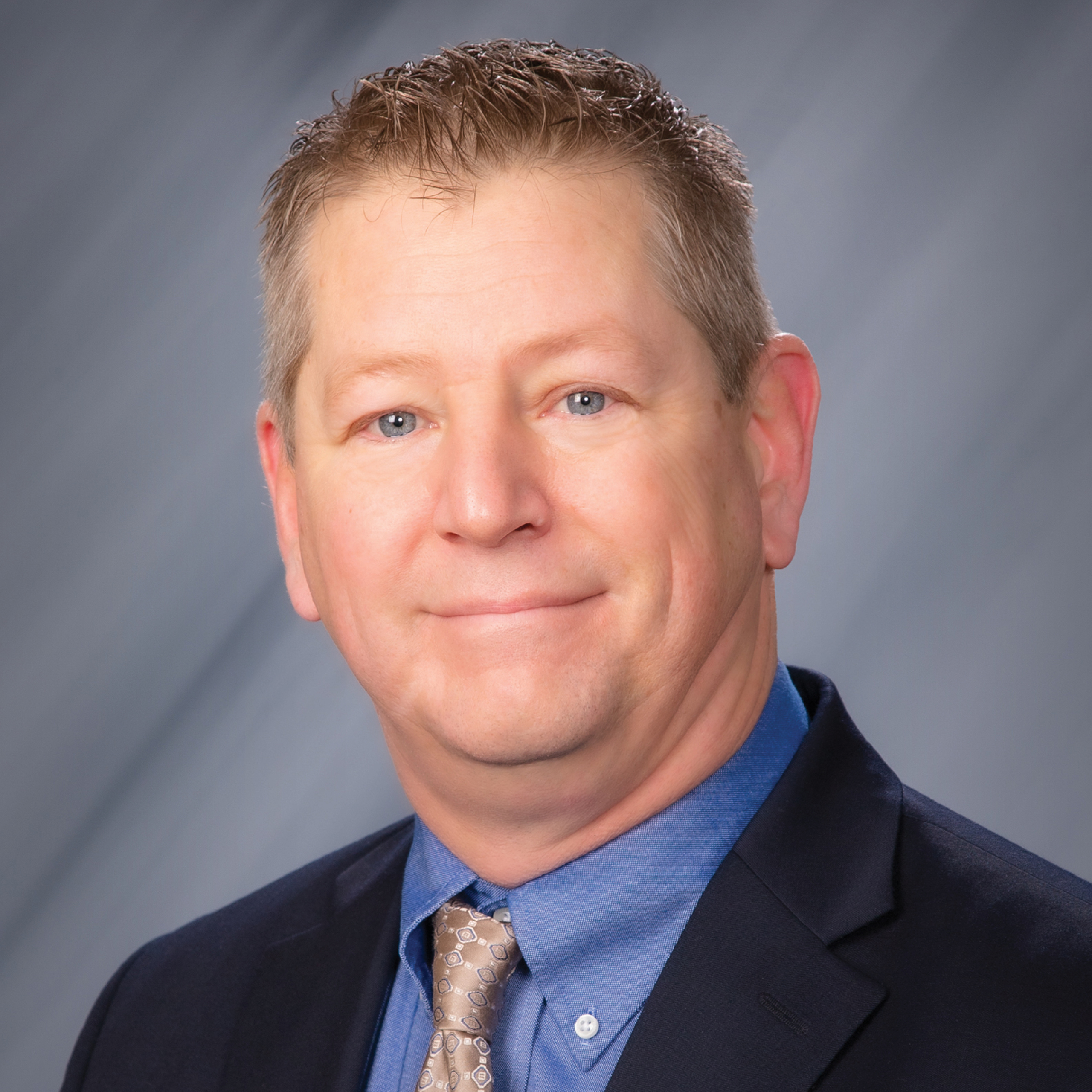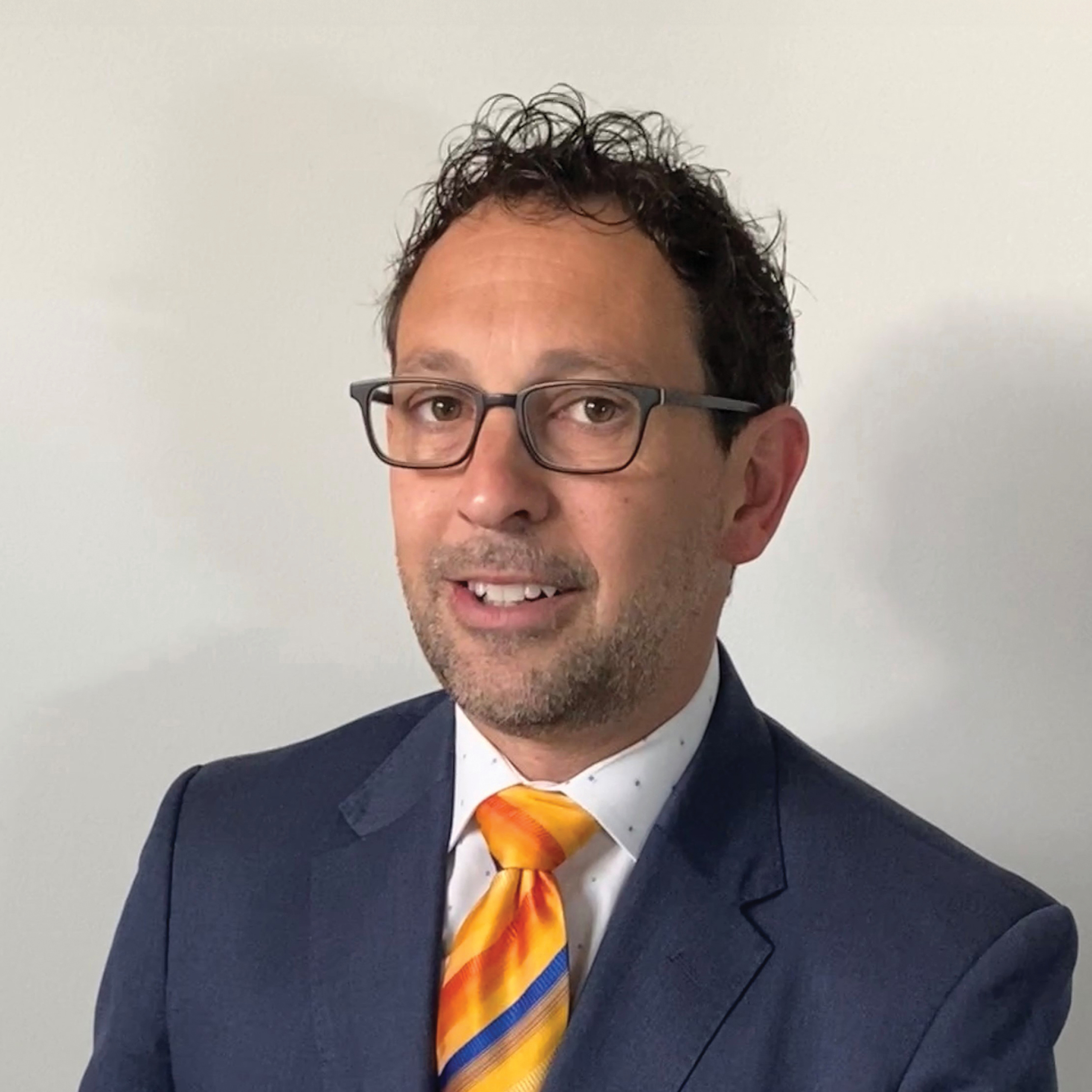
In Marion County Circuit Court in Salem, Oregon, public defender Shannon Wilson was forced to take a radical step to deal with a shortage of assigned lawyers for their clients.
In early May, Wilson (who uses they/them pronouns) filed yet another motion to withdraw charges against Ignacio Palacios-Sanchez, a man accused of felony sexual assault, writing, "Because no defense counsel is available to provide the competent representation to which Mr. Palacios-Sanchez is constitutionally entitled, the court must dismiss the charges."
Wilson, who has led Public Defender of Marion County Inc. since 2021, has in the past year begun to make a unique argument to address crushing caseloads—a problem among public defender offices nationwide.
Rather than simply arguing that clients need representation, Wilson has asserted in numerous motions to the circuit court that the nonprofit organization they lead is not meeting ethical obligations to its clients by continuing to accept court-ordered assignments while its attorneys are working in excess of reasonable caseload limits.

One of Wilson's motions to withdraw was heard by the Oregon Supreme Court in April of last year, but it was dismissed because the attorney at the center of the case had already left his job at Public Defender of Marion County.
Wilson says everyone in the legal profession in Marion County has tacitly allowed a broken system to exist for too long.
"We've been keeping things comfortable for attorneys and judges and prosecutors rather than truly doing our jobs as advocates," they say. "And for whatever reason, that culture developed here and persisted."
Oregon, like many states, is facing a crisis in public defense because of low pay, excessive caseloads, frequent burnout and a "great resignation" of qualified attorneys that began during the pandemic and shows no signs of ebbing.
Though this shortage of public defenders—tasked by the Sixth Amendment with providing counsel, a right guaranteed by the 1963 U.S. Supreme Court ruling Gideon v. Wainwright—is a long-standing national problem, Oregon finds itself in a particularly precarious position.
"It's a 50-year disease." —Stephen Hanlon
The Oregon Project, a 2022 report issued by the ABA Standing Committee on Legal Aid and Indigent Defense and created with the accounting firm Moss Adams, estimated that Oregon was short nearly 1,300 attorneys to adequately provide counsel to those accused of crimes in the state.
That report was followed in 2023 by the National Public Defense Workload Study, a national study the ABA Standing Committee on Legal Aid and Indigent Defense and others completed with the help of the RAND Corp. that recommended a complete overhaul of national public defender caseload standards.
"It's a 50-year disease," says Stephen Hanlon, a Missouri attorney who has advocated for change in the nation's indigent defense system for decades and was one of the lead authors of the National Public Defense Workload Study. That project analyzed 17 previous state-based caseload studies to arrive at more realistic standards.
"We have essentially suspended enforcement of the Rules of Professional Conduct for this entire class of impoverished, disproportionately Black and brown people—many of whom are suffering from poverty, homelessness, mental illness and addiction," says Hanlon, a member of the ABA Section of Civil Rights and Social Justice.
Bringing the issue to a boiling point in Oregon in November, U.S. District Judge Michael McShane issued a ruling that ordered all courts in Oregon to release anyone held in custody without representation for more than seven days. In late May, the San Francisco-based 9th U.S. Circuit Court of Appeals upheld the court's ruling in Betschart v. Oregon, calling it a "direct violation" of the right to counsel guaranteed by Gideon v. Wainwright. The suit was filed by the Oregon Federal Public Defenders office, which represents clients in federal courts as well as arguing for the constitutional rights of state residents.
Fidel Cassino-DuCloux, who leads the federal defenders' office, says of the ruling: "The 9th Circuit's opinion in Betschart breathes life into the Sixth Amendment right to counsel, which has been an empty promise for too many presumptively innocent Oregonians charged with crimes. The Oregon Public Defense Commission, the governor's office, the supreme court or whoever the bureaucratic bodies are controlling this really need to think about what is today's fix. And really, the only answer is this: If you don't have enough lawyers to represent people, then you can't charge them."

According to a dashboard compiled by Oregon Circuit Courts, the number of people in custody without representation hit a high of 404 in June 2023. Since the filing of the federal lawsuit, those numbers have dropped to 138 at press time as courts have worked to release some defendants.
Jessica Kampfe, executive director of the Oregon Public Defense Commission, notes that in 2023, the Oregon legislature approved over $90 million in new statewide funding for public defenders and overhauled the state's indigent defense system.
The law will shift Oregon from a flat-fee, contract-based system—in which about half of defenders are currently members of a consortium of private criminal defense firms—to one in which defenders are either state employees or work for nonprofits. The law also aims to have at least 30% of public defense counsel at the trial level employed by the Oregon Public Defense Commission in 2035. This year, the state opened new public defender offices in Portland and in Jackson County in the south portion of the state—and it has funding to open a third in Salem, the state capital, Kampfe says.
"What we did with the statutory change was turn the boat around. But it still has a long way to go." —David Carroll
David Carroll, executive director of the Sixth Amendment Center—whose 2019 report on Oregon's public defense system, The Right to Counsel in Oregon, recommended many of the reforms included in the 2023 law—says the state's flat-fee system encouraged some firms to take on too many clients at the expense of services.
"They were actively sailing in the wrong direction," Carroll says. "What we did with the statutory change was turn the boat around. But it still has a long way to go."
David Carroll, executive director of the Sixth Amendment Center—whose 2019 report on Oregon's public defense system, The Right to Counsel in Oregon, recommended many of the reforms included in the 2023 law—says the state's flat-fee system encouraged some firms to take on too many clients at the expense of services.
"They were actively sailing in the wrong direction," Carroll says. "What we did with the statutory change was turn the boat around. But it still has a long way to go."
In 2023, Moss Adams produced a report for Public Defender of Marion County that found the agency was short 37% of the attorneys it needs—and that its public defenders would have to work 13-hour days to meet their obligations. Wilson says that to meet the new caseload standards based on the National Public Defense Workload Study, her office would need to jump from the 18 attorneys it currently has to 29.
"We decided what we can do in our role is, we can object to appointments at arraignments so that we're going to put that in the court record," Wilson says.
The American Civil Liberties Union of Oregon, which filed amicus briefs for both Betschart and one motion to withdraw in Marion County, says it takes courage for public defenders like Wilson to stand up to a system that in the past has given little incentive to provide adequate representation to those who can't afford an attorney. A 2000 U.S. Justice Department report found that in 1996, in the 75 largest counties in the United States, 82% of state defendants were represented by court-appointed counsel.
"I think it speaks volumes to the integrity of public defenders that they are doing everything in their power to make sure that every Oregonian, regardless of whether they represent them, is being treated fairly," says Kelly Simon, legal director of the ACLU of Oregon.
From the prosecutors' perspective, the crisis is making their job harder as well, says Charlie Smith, state's attorney for Frederick County, Maryland, and the immediate past president of the National District Attorneys Association. Smith believes both prosecutors and public defender offices should be better funded and that more loan forgiveness programs are needed.
"The bottom line is, there's a shortage of lawyers in public service," Smith says. "You have to compete with a smaller pool of law school graduates with large student loans. A lot of them go into private practice."
To help address the state's shortfall, Oregon became the third state in the nation to allow law school graduates to begin practicing law by completing 675 hours of work under a licensed attorney rather than taking the bar exam.
Some public defenders say that prosecutors are creating too much demand by needlessly prosecuting misdemeanors and even some felonies that could be better served by diversion programs or no prosecution at all.
April Frazier Camara, president of the National Legal Aid & Defender Association, believes 30% to 40% of convictions are unnecessary. She points to an April op-ed in the New York Times by Manhattan District Attorney Alvin Bragg Jr. calling on the New York state legislature to increase mental health funding as an example of people working on both sides in search of alternatives to the carceral system."We see so many people with untreated mental health issues, and that needs to be addressed," Camara says. "But oftentimes, the knee-jerk response is to immediately get them off the street. And if you don't have anywhere else to take them, lock them up."
Smith, however, says there's often political pressure to either prosecute more cases or be perceived as soft on crime. "If you're in a superconservative jurisdiction and you're diverting a large percentage of cases, you're just not going to get reelected."
To the north of Oregon, in Yakima County Superior Court, Judge Richard Bartheld was trying to move arraignments through the docket. But time after time, in his courtroom situated in the basement of the county jail, he found no public defenders available.
Several times during in-custody arraignments one morning in April, Bartheld told defendants: "We don't have counsel for you yet."
During a video arraignment for a man accused of burglary, Bartheld told a defendant: "There is not an attorney assigned yet. I'm unable to appoint one."
In Washington, state law requires a trial within 60 days of an arraignment if the defendant is in custody—though exceptions are often made. Bartheld was hopeful he'd meet that deadline, telling the defendant: "We should be able to maintain your right to a speedy trial."
Bartheld made sure the man, Roberto Lozano, had the telephone number of the Yakima County Department of Assigned Counsel.
Without an attorney present, Lozano said simply, "I don't agree to anything."
"It's a situation that nobody wants to be in," says Paul Kelley, director of the Yakima County Department of Assigned Counsel. "When we're down so many lawyers and we can't provide the services that we're supposed to, nobody likes that."

Kelley says the crisis began in earnest during the pandemic after several experienced attorneys left his office. The attrition has grown—of 17 budgeted full-time trial attorney positions, Kelley's office is short seven. Of those, on the felony side, he should have nine attorneys but currently only has five.
And it's not that his office doesn't have the budget. Kelley simply isn't able to hire experienced attorneys.
"It's a human resources problem," he says. "We can't fill those positions fast enough."
In summer 2022, Kelley sent a letter to the court informing it of the issue. "We started to see that the case filing rate was oversaturating our capacity, so we had to set a limit on the number of cases that we could process per month," he says.
Joseph Brusic, Yakima County prosecuting attorney, also is facing a crunch: Of a staff of 24 attorneys involved in prosecuting misdemeanors and felonies, he's short five full-time trial attorneys. He recognizes, though, that defenders on the other side of the courtroom are even more swamped.
"Part of my responsibility as an elected prosecutor is to make sure that I protect the defendants' rights as much as the court and as much as a public defender," Brusic says. "I want to make sure that not only do we have enough public defenders and defense attorneys in general, I want to make sure that they have effective counsel."
Public defenders in Washington also are feeling the crunch. According to Anita Khandelwal, director of the King County Department of Public Defense, which serves an area that includes Seattle, experienced attorneys are leaving and being replaced by ones who are talented—but younger and less experienced.

"There's a mismatch between who we're able to hire and what our greatest need is," Khandelwal says. "While it's really great to have new attorneys and see the perspective they bring to the work, that doesn't shift the burden from the more seasoned attorneys."
David Montes, who was a public defender in King County for 11 years, now works for the ACLU of Washington. He felt overworked and had to make a change. In his final year, Montes managed four high-profile murder cases along with several serious felonies. "I don't think that what I was doing was sustainable. It was just totally insane," Montes says. He was working 60- to 70-hour weeks, rarely saw his wife and developed "horrible neck spasms."
Montes says he and many colleagues struggled with mental health issues and burnout. Technology, expert testimony and increasing complexity of cases demanded many hours. "It's hard to keep your mind around all that, and then you're also staring at autopsy photos for 14 hours a day," he says.
"Everybody has known that there's no way that any reasonably competent lawyer could handle that many felonies a year." —Stephen Hanlon
The National Public Defense Workload Study notes that this complexity makes the National Advisory Commission on Criminal Justice Standards and Goals standards for public defenders, originally passed in 1973, inadequate. Those standards failed to differentiate between classes of felonies, giving equal weight to burglaries, sexual assaults and homicides. The National Advisory Commission standards for over 50 years simply limited defenders to taking 150 felonies or 400 misdemeanors per year.
"Everybody has known that there's no way that any reasonably competent lawyer could handle that many felonies a year," Hanlon says. "And the real truth is, very few states were even at that level. You'd routinely see states where lawyers are handling 200, 300 or 400 felonies and lawyers handling 600, 700, 800, even 1,000 misdemeanors. That's still going on in parts of the country," he says. "We need to stand up to it."
In March, the Washington State Bar Association decided to do just that. According to Jason Schwarz, director of the Snohomish County Office of Public Defense and chair of the state bar association's Council on Public Defense, the organization became the first state bar association to adopt caseload standards based on the National Public Defense Workload Study. The bar association has now asked the Washington Supreme Court to update its Standards for Indigent Defense Services, which courts in Washington are bound by state law to follow.
If approved by the court, most of the guidelines will start to be phased in by summer 2025. The new caseload standards set a range of expected average hours for various classes of cases—everything from parole or probation violations at 13.5 hours, up to 286 hours for cases involving the possibility of a life sentence without parole. In addition, by 2027, public defenders across the state will start to be limited to taking on 47 felonies or 120 misdemeanors per year.
Critics are worried the new caseload limits will cause chaos in the state's criminal justice system.
"To go down to 47 cases per year per defense attorney is absolutely ludicrous," says Brusic, who also leads the state's prosecuting attorney association. "It will bring the system to a halt. It can't be done."
Schwarz says there will never be a good time to put in place reasonable limits, and therefore he urged the state bar to make the leap. "If we're waiting for everything to be ready, we'll be waiting forever," he says. "We can't wait for the prosecutors—they'll never make it. And if we wait for judges to make a move, it will be in favor of judges."

Complicating the situation in Washington is that state funding for public defense is at one of the lowest rates in the nation, with counties picking up the largest portion of the bill. According to the Washington State Association of Counties, in 2022, counties paid a little under $200 million for public defenders while the state chipped in around $6 million; the Snohomish County Office of Public Defense, with a budget of $13 million, got just $430,000 from the state.
To address this discrepancy and avoid what Kelley calls "justice by geography," in September 2023, the state's association of counties sued the state of Washington, claiming that inadequate funding denied residents their constitutionally protected right to counsel. In March, however, a Thurston County judge ruled against the counties, stating that only indigent individuals, not the counties themselves, could have standing in such a case.
Brusic, whose county, Yakima, also filed separately in that case, says, "We believe that [the state] is not upholding their constitutional duty" by failing to help counties—especially rural, less-populated ones—provide public defenders.
Other states are feeling the crunch in public defense and trying to address the crisis.
In 2022, the Wisconsin Association of Criminal Defense Lawyers sued Brown County on behalf of eight defendants whose cases languished for months waiting for assigned counsel—but a judge in September 2023 denied the class action.
Colorado's Office of the State Public Defender is asking the state legislature for an additional $14.7 million to fund 70 more attorneys and 58 paralegals and support staff—a significant boost, but well short of the 230 total new attorneys the office says will be needed to provide adequate representation based on the National Public Defense Workload Study.
Pennsylvania, which previously had a system of public defense funded exclusively by counties, in early 2024 dedicated the first state funds—$7.5 million in grants—to assist with public defense.
In Missouri, which in the past dozen years has worked to reform its system, a court ordered in 2023 that wait times for assigned counsel—which for almost 600 defendants had lasted more than a year—be limited to two weeks.
In addition, there are efforts at the national level to address the shortage of public defenders. Rep. Suzanne Bonamici, whose Oregon district includes most of Washington County, is the primary sponsor of the bipartisan Ensuring Quality Access to Legal Defense Act, which would create a $250 million grant fund to states for public defense. The bill, first introduced in 2019, seeks to achieve pay parity between public defenders and prosecutors within five years, and it also tasks the federal government with collecting nationwide data on public defender caseloads. The bill would also increase funding from $25 million to $75 million for student loan forgiveness programs directed at law school graduates who choose to work in public defense.

"This is something that should not be partisan," Bonamici says. "Because we need a functioning judicial system, and it doesn't function if we don't have public defenders."
Michigan may have the most striking history of reform in its public defender system. In 2007, the ACLU filed Duncan et al v. Granholm, claiming indigent defendants were being denied their constitutional right to adequate counsel and noting the state provided no funding to counties, had no administrative oversight of public defense and no performance standards.
According to Tom Boyd, who was chief judge of Michigan's 55th District Court and deeply involved in Michigan's reform efforts, county funding for indigent defense in the state prior to reform totaled just $38 million annually. A 2008 National Legal Aid & Defender Association study found Michigan ranked 44th among states in per capita spending on indigent defense.
Carroll of the Sixth Amendment Center notes that even major metropolitan centers such as Detroit and Pontiac relied on contracting independent attorneys rather than having a unified public defender's office. "The level of services was deplorable," he says. "There was one place, a suburban area, where everyone in the system referred to it as the McJustice system."
Boyd says defendants in the state were routinely arraigned without an attorney present.
In 2011, Michigan Gov. Rick Snyder, a Republican, issued an executive order establishing a commission to investigate improving public defense in Michigan, and the next year, the commission issued a report with a detailed list of recommended reforms.
In 2013, the legislature passed a major reform bill that created the Michigan Indigent Defense Commission, tasked with setting and enforcing standards for public defense—many of which were based on the ABA Ten Principles of a Public Defense Delivery System. The bill also acknowledged for the first time that the state had a responsibility to supplement county funding for public defense. Among the standards was a requirement for independence of public defenders from the court. Boyd said he came around on the need for independence when he gave a talk to Wayne County district court judges early in his time on the commission. After the talk, Boyd says one judge asked a question: "If there's independence from the judiciary, how will I fund my campaign?"
After that judge implied they were getting campaign donations from attorneys appointed to defend clients, Boyd became convinced of the need for independence.
"Why is independence from the judiciary important?" Boyd says. "Let's say that the corrupt answer is only the extreme example and a small percentage of cases. But there's a federal lawsuit in Detroit right now where a young public defender claims that a judge told her: 'Look, most people here are guilty. We don't have time for messing around with these cases. You've got to move these cases.'"
In the dozen years since the report was issued, Michigan has gradually rolled out all eight statewide standards, including making public defense independent from the judiciary and discouraging flat-fee contracts. It also shifted much of the burden for funding public defense to the state level. As of the 2023 fiscal year, the state pays $220 million for public defense. The local share that counties are required to fund, which Carroll says is around $60 million, is capped at what each county was paying three years prior to the passage of the 2013 reform bill.
Boyd says the shift in the system has been striking. "In Michigan today, I am routinely having conversations about how there are no lawyers available to do anything but indigent defense," he says. "It's now an attractive place to work."
That's an enviable situation for people like Kelley in Yakima County. "Recruiting has been slow going this spring," he says. "Things might pick up as graduation comes and the bars are being taken." With an unspent budget for defense attorneys, the county has authorized him to pay law students during summer internships.
"It's a beautiful area," Kelley says, making a sales pitch for this agricultural community in the eastern foothills of the Cascade range. "When I came here some 30 years ago, I was like, 'Wow, this is great.' And I stayed. I want people to experience that. But the workload has to allow it. That lets you become a better community member and a better lawyer."
Andrew Engelson is an award-winning freelance journalist and editor who, in a career spanning more than two decades, has covered topics ranging from climate change to LGBTQ issues. His work has appeared in the Seattle Times, Super Lawyers, High Country News and many other publications. He lives in Seattle.